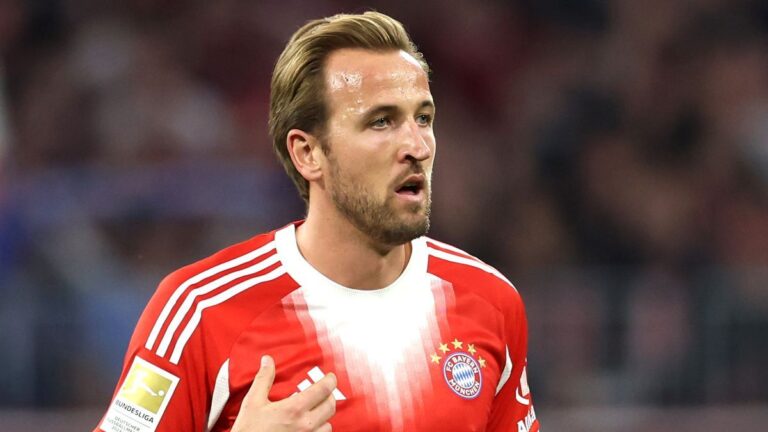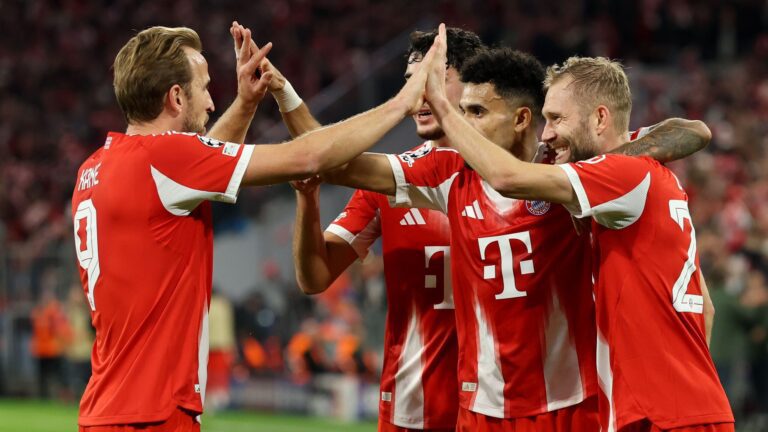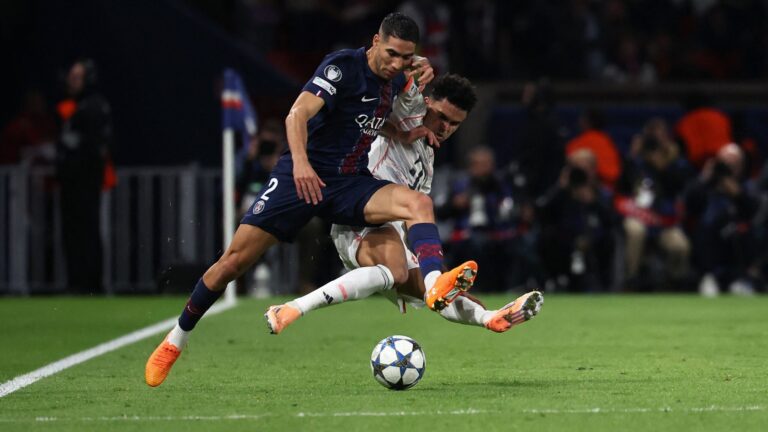Navigating Roma’s Fiscal Crisis in the World of Football
In the evolving world of soccer finance, Roma and Financial Fair Play (FFP) regulations are creating major obstacles that could transform the team’s lineup and market activities. Claudio Ranieri, serving as a vital advisor, has pointed out the urgent requirement for tactical shifts to dodge harsh UEFA penalties, illustrating how these economic restrictions affect decisions from bringing in new players to renewing contracts.
- Ranieri indicates that Roma may need to sell off team members to meet FFP standards
- The attempted deal for Sancho collapsed due to funding shortages
- Renewals for players like Dybala and Pellegrini are now based on their performance during the current season



Roma’s Adaptation to FFP Constraints in Player Transfers
Claudio Ranieri, who previously led Roma as manager, shared insights into the club’s fragile financial position during a Sky Sport discussion. He emphasized the importance of following UEFA’s FFP mandates, noting that failing to do so might result in being barred from continental competitions-a danger that’s all too real in the cutthroat environment of modern soccer. Recent developments highlight that in the last year, various European outfits, such as a leading English team hit with a €20 million fine for comparable breaches, demonstrate the tangible repercussions of overlooking these fiscal protections.
Transitioning to Talent Cultivation and Player Sales for Stability
For ensuring economic steadiness, Roma is moving away from big-name acquisitions toward fostering up-and-coming players with their current coach, Gian Piero Gasperini. This strategy helps reduce expenses while developing sellable assets for the future. Rather than pursuing well-known athletes, the team is pouring resources into their youth program, similar to how clubs like Borussia Dortmund have profited by developing young stars and selling them to satisfy regulatory needs.
Ranieri’s Views on Economic Challenges
Ranieri shared in his remarks, “Reaching FFP standards requires us to execute sales to secure our financial footing. How we fare in domestic and Europa League matches will significantly influence our future direction.” Additionally, he mentioned that although the club wants to keep essential players, outside forces could intervene, particularly as the latest FFP data indicates that clubs surpassing loss thresholds encounter immediate penalties in the upcoming season.
The Breakdown of the Sancho Acquisition Due to Budget Issues
The failed attempt to sign Jadon Sancho clearly shows how Roma’s limited resources are driving key choices. Ranieri acknowledged that, even with the owners’ eagerness to back the coach, monetary obstacles prevented the deal without first letting go of important assets. This mirrors other recent transfer periods where teams, including a top Serie A competitor grappling with alike fiscal limits, had to drop their targets, pointing to the wider effects of FFP on the transfer environment.
Questions About Contracts for Star Players
Looking ahead, agreements for central figures such as Paulo Dybala and Lorenzo Pellegrini remain uncertain, with extensions now reliant on their efforts this year. From Ranieri’s standpoint, Roma might have to release at least one premium player in upcoming periods to remain compliant, a trend that’s growing as UEFA’s recent figures reveal a 15% uptick in teams turning to sales for FFP compliance.
Future Effects on Roma’s Goals
In the long run, Roma needs to handle their sporting objectives alongside rigorous financial rules. This intricate equilibrium might reshape their market position, steering them toward enduring development instead of quick wins, much like how squads in different leagues have bounced back through wise budgeting and investment in young talent.
Persistent Economic Hurdles for Roma in Italian Football
The Giallorossi’s ongoing budget problems have long influenced aspects of Italian soccer, from securing new talent to maintaining club steadiness. Under UEFA’s FFP guidelines, which promote sustainable operations, Roma has dealt with rising debts and oversight, curbing their transfer capabilities and sparking debates about their future in Serie A. For example, financial analyses show that Roma’s payroll and signing costs frequently outstrip their earnings, complicating efforts to achieve balance without outside funding.
Another critical element is the way these monetary issues affect player deals. Take Jadon Sancho, the English forward linked from Manchester United; Roma’s failure to cover the costs was pivotal. While Sancho’s addition could have strengthened their offense, talks fell apart because of cash flow problems. Financial analysts in soccer note that teams like Roma must maneuver through tight regulations, which can undermine major transactions and hinder overall results.
Main Drivers of Roma’s Financial Restrictions
Multiple factors feed into Roma’s monetary woes, such as elevated running expenses, dropping attendance figures, and the lingering impact of the COVID-19 crisis. Financial statements reveal that Roma has posted losses over €100 million recently, pushing them to emphasize savings over extravagant purchases. This is worsened by UEFA’s demands for a steady budget to join European events.
Against this backdrop, the Sancho deal’s downfall reflects deeper problems in Serie A’s economic scene. With his speed and ball-handling prowess, Sancho was a desirable prospect for Roma’s leadership, but the agreement disintegrated over issues with salaries and fees. This pattern isn’t unique, as seen in cases like AC Milan’s difficulties, where economic strains have caused lost chances during transfer seasons.
Dissecting the Failed Sancho Move
The Jadon Sancho transfer episode perfectly illustrates how Roma’s financial barriers can derail significant deals. Valued at roughly €40 million and on loan at Manchester United, Sancho was considering a permanent transfer, yet Roma couldn’t adjust their finances to proceed. Experts in transfers highlight that elements like Sancho’s steep wage demands and Roma’s FFP limitations were critical. Lacking the necessary capital, Roma pulled out, disappointing supporters and leaving the player to explore alternatives.
This setback reveals the broader consequences for squad composition. Without additions like Sancho, Roma’s player pool weakened, which might affect their Serie A performance and European goals. Fans and analysts often debate how such signings could boost a team’s capabilities, but for Roma, fiscal realities came first.
Insights from Comparable Transfer Setbacks
Examining other examples, similarities emerge with clubs in financial distress. Take, for instance, how Real Madrid dealt with registration issues due to salary caps in La Liga, mirroring Roma’s situation with Sancho. In each case, concerns over UEFA rules compelled teams to revise their approaches, stressing the importance of careful financial oversight in today’s game.
Ranieri’s Guidance on Upholding UEFA Standards
In the midst of these obstacles, Claudio Ranieri’s expertise as an experienced coach highlights the significance of UEFA compliance. With a rich background in Italian and European soccer, Ranieri has championed eco-friendly methods. At Roma, he faced trials in balancing FFP requirements with keeping the team competitive, with accounts indicating he promoted fiscal changes to prevent exclusions from UEFA events or substantial penalties.
Drawing from his past at teams like Leicester City and Inter Milan, Ranieri offers useful lessons on managing budgets while delivering results. His knowledge could assist Roma in overcoming these issues, possibly by prioritizing academy development or forming alliances to increase income.
Advantages of Tackling Financial Adherence for Teams
Complying with UEFA standards provides numerous perks for clubs such as Roma. It fosters lasting security, enabling improved planning for deals and daily operations. Additionally, clubs that follow the rules draw more backers and partners, as they seem trustworthy. For athletes, it offers the chance to join a well-managed outfit, minimizing the potential for unexpected interruptions.
On a practical level, teams can adopt measures like expanding revenue streams via merchandise, online platforms, or international tours, or by crafting more efficient contracts to avoid excess spending. Ranieri’s tactics might incorporate these, leveraging his success-driven mindset to promote financial wellness alongside game-day achievements.
Effective Strategies for Handling Team Budgets
- Audit Regularly: Perform routine financial reviews to monitor outlays and income, guaranteeing they match UEFA criteria.
- Focus on Youth Academies: Channel funds into local prospects to lower acquisition expenses and form an economical roster.
- Secure Partnerships: Establish agreements with sponsors and media outlets to boost funds without overextending resources.
- Wage Optimization: Design player deals with bonuses linked to performance to manage salary costs efficiently.
Implementing these approaches can help clubs avoid pitfalls like the Sancho deal and strengthen their position in competitions. In the end, Roma’s experience with these economic trials offers a valuable lesson for the soccer community, merging excitement with key insights on long-term viability.
Roma’s Financial Woes: A Barrier to Big Transfers
Understanding Roma’s Financial Challenges
AS Roma, one of Italy’s prominent football clubs, has been grappling with significant financial hurdles that are impacting their ability to compete in the transfer market. In recent years, the club’s mounting debts and revenue shortfalls have placed them under scrutiny from financial regulators, making high-profile acquisitions like Jadon Sancho increasingly difficult. These Roma financial struggles stem from a combination of poor on-field performance, reduced ticket sales, and the lingering effects of the COVID-19 pandemic on stadium attendance and sponsorship deals.
Key factors exacerbating Roma’s financial situation include:
- High wage bills and player contracts: The club has committed to lucrative deals for star players, which strain their budget and limit funds for new signings.
- UEFA Financial Fair Play regulations: Roma must adhere to strict profit and sustainability rules, which cap spending based on earnings, further hindering Jadon Sancho transfer ambitions.
- Declining broadcasting revenues: With Serie A facing competition from other leagues, Roma’s share of TV rights has not grown as expected, adding to their fiscal pressures.
Jadon Sancho: The Star Winger Roma Desperately Wants
Jadon Sancho, the dynamic English winger known for his pace and dribbling skills, has emerged as a top target for Roma as they look to bolster their attacking options. However, ongoing Roma financial struggles have thrown a wrench into potential negotiations, with the club unable to meet Manchester United’s asking price amid broader economic constraints.
Sancho’s appeal lies in his proven track record:
- Impressive stats from his time at Borussia Dortmund: He notched over 50 goals and assists in the Bundesliga, showcasing his ability to influence games.
- Versatility on the pitch: Whether on the wing or cutting inside, Sancho’s style fits perfectly with Roma’s tactical setup under various managers.
- Market value fluctuations: Due to injury concerns and inconsistent form at Manchester United, his transfer fee has dipped, but it’s still beyond Roma’s current budget.
The Jadon Sancho transfer talks have stalled primarily because of Roma’s inability to secure financing. Reports suggest that potential loan deals with buy options are being explored, but UEFA compliance concerns, tied to Claudio Ranieri’s leadership, are complicating matters. This situation highlights how financial struggles can derail even the most promising player moves in modern football.
Claudio Ranieri’s Push for UEFA Compliance
Under Claudio Ranieri’s guidance, AS Roma is attempting to navigate the complex landscape of UEFA compliance to ensure long-term stability. Ranieri, a seasoned manager with a history of turning clubs around, has prioritized financial restructuring to meet UEFA’s Financial Fair Play (FFP) requirements, which demand that clubs live within their means.
Breaking down UEFA compliance under Ranieri:
- Core elements of FFP rules: These include maintaining a balanced budget, limiting losses over a three-year period, and ensuring that transfer spending aligns with generated income, all of which are critical amid Roma’s financial struggles.
- Ranieri’s compliance strategies: He’s advocated for cost-cutting measures, such as renegotiating player contracts and focusing on youth academy talents to reduce reliance on expensive transfers like that of Jadon Sancho.
Ranieri’s efforts also involve:
- Enhancing squad efficiency: By promoting homegrown players, he’s aiming to lower wage expenditures while building a team that complies with UEFA’s sustainability metrics.
- Seeking external investment: Talks of partnerships or stake sales could inject funds, but these are slowed by regulatory hurdles, directly impacting Jadon Sancho transfer prospects.
- Monitoring transfer impacts: Any deal for a high-profile player must pass UEFA’s scrutiny, meaning Roma’s financial health is under the microscope, potentially blocking moves until compliance is achieved.
How Financial Issues Interlink with Transfer and Compliance
The threads of Roma’s financial struggles, Jadon Sancho’s potential transfer, and Claudio Ranieri’s UEFA compliance efforts are deeply intertwined, creating a challenging environment for the club. For instance, failing to secure Sancho could weaken Roma’s competitive edge in Serie A and European competitions, perpetuating a cycle of declining revenues and heightened scrutiny from UEFA.
Specific interconnections include:
- Budget constraints affecting negotiations: With limited funds, Roma might opt for budget-friendly alternatives to Sancho, such as loan deals or free agents, to maintain UEFA compliance.
- Ranieri’s influence on decision-making: As manager, he’s balancing short-term team needs with long-term financial health, often prioritizing compliance over splashy transfers.
- Broader implications for Italian football: Clubs like Roma facing these issues highlight the need for reformed financial models, potentially inspiring changes in how UEFA enforces rules.
In exploring these dynamics, it’s clear that Roma’s path forward requires strategic planning to overcome their financial struggles and pursue talents like Jadon Sancho without jeopardizing Claudio Ranieri’s UEFA compliance goals. This scenario underscores the importance of fiscal responsibility in football, offering lessons for fans and clubs alike on navigating the high-stakes world of transfers.









